Easy Guitar Note Combinations Based on Proximity
I of the coolest things you can play on a guitar is ability chords. They're also one of the easiest as they require the least finger strength of any guitar chords. These two-note treasures (which aren't really chords per se as much equally they are bottoms of chords) are and then simple in fact that they're sometimes referred to as "cheater" chords.
Power chords are used in all genres of music and are a fundamental element in rock. When played on an electrical guitar with the baloney cranked up, they add depth and tonal colour. Their heavy, ominous sound helps prepare the mood of a vocal.
If y'all are new to power chords, bank check out this consummate guide to help you become started with them.
You volition detect a complimentary downloadable pdf with all the positions and the fingering.
We accept as well added several tabs to first practicing only in a higher place all to have fun!
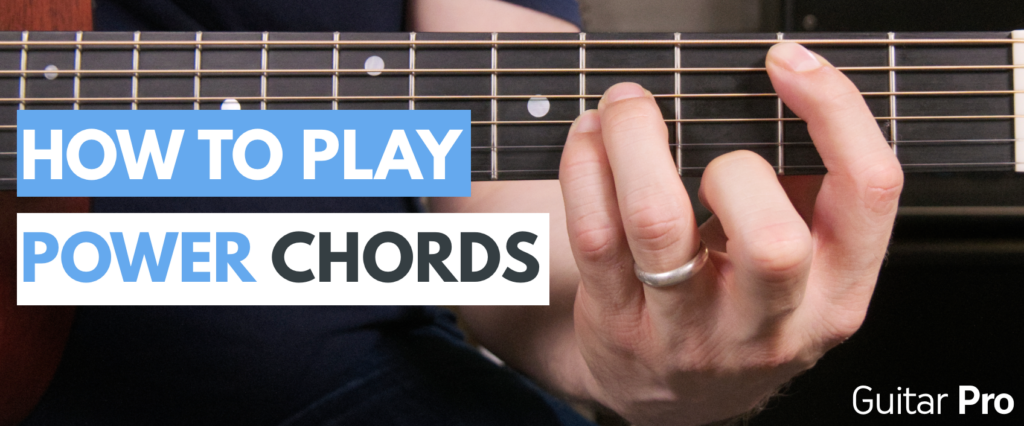
The post-obit is a glimpse into the globe of power chords and tips for playing them:
Origins of the power chord
Power chords were first used back in the 1950s on recordings by electric blues guitarists Willie Johnson and Pat Hare. Link Wray used them in 1958 on "Rumble." But it's The Who's Pete Townshend, with his famous windmill strum, who often gets credit every bit the first to take power chords mainstream.

The departure between chords and power chords
A chord is the combination of three or more notes played simultaneously. Known as triads, chords contain a root, 3rd and fifth annotation, at least. Power chords, on the other hand, are dyads. They are composed of a root and fifth notation just, though they tin also include an additional octave notation.
Power chords are neither major nor small-scale
Since a power chord doesn't contain a third note, which determines whether a chord is major or minor, information technology is neither. Power chords are tonally ambiguous. They tin be used in a situation where either a major or a minor chord is called for.
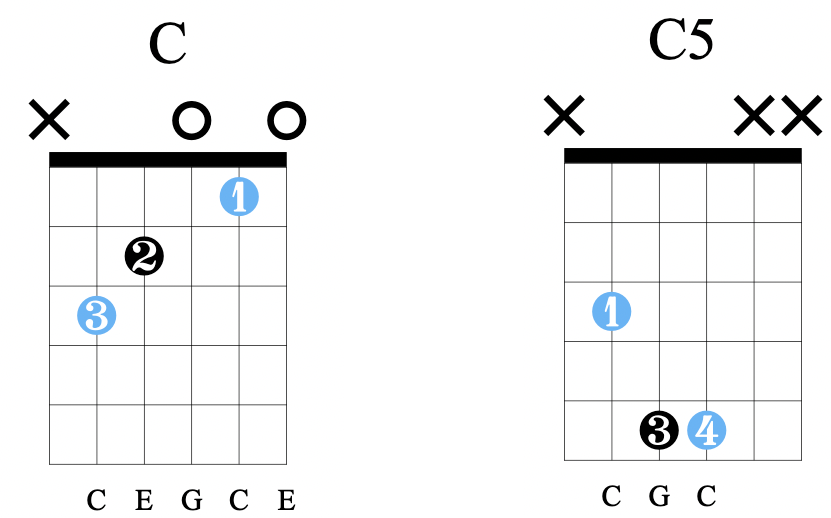
They're mobile
Unlike chords with their shifting configurations, a ability chord is a stock-still shape that moves up and down the guitar neck to create other, different power chords. All that changes is the name and location of the chord on the fretboard, non its shape.
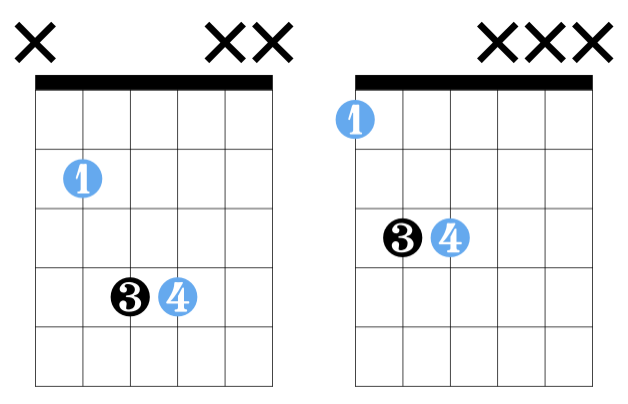
They're named for their root
Ability chords are often chosen a "5th" or "5" chord. If you see a chord written equally G5, it's a Yard power chord. The root of the G5 chord is played on the sixth string, 3rd fret—a "G." If you move the chord up ii frets to the 5th fret, 6th string, it's an "A" power chord or an A5 since the root note on the fifth fret of the 6th string is "A." You get the picture. By the style, if you're a chip rusty on note names, at present would be a good fourth dimension to castor upward.
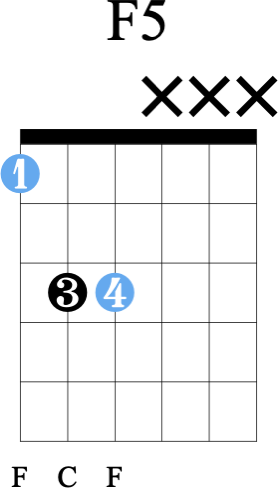
How to strum a power chord?
To strum a ability chord, play only the two or three strings you're fretting. As a power chord contains no open strings, you'll accept to mute whatsoever unused strings. To do this, use the tip of your kickoff finger to fret the root note and, with the balance of the first finger resting lightly on the remaining strings in that fret, mute all open up strings. Power chords are typically strummed fast and rhythmically. Get-go with downstrokes so add in upstrokes.

To spice up your practice, download the tablatures of the intros of "Smells Like Teen Spirit" and "Middle of the Tiger" here. You'll find the scores at the bottom of the article.
Give information technology a go!
Begin with the G power chord or G5. To form the bones power chord shape, place your first finger on the sixth (low E) string, 3rd fret. This is a "K" notation and the chord's namesake. Side by side, identify your 3rd finger on the fifth (low A) string, fifth fret. Strum these 2 notes together, making sure both ring cleanly. Now, keep that same shape and try moving it up and downward the cervix of your guitar. Remember to mute whatever open strings.
Add together an octave
You can add a third notation to the dyad to get a fuller sound. Sticking with the G5, identify your fourth finger on the quaternary (low D) cord, fifth fret, right under your third finger. (Yous can also barre the two fifth fret notes with your third finger.) This will be a second "G" note, an octave of the sixth string "G" root.
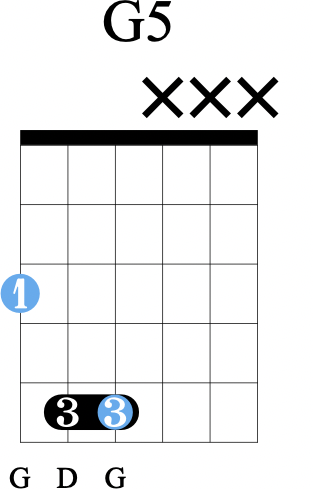
Root on some other string
You can build a power chord using the fifth string as your root by simply moving the entire power chord shape down one string. This will necessitate a muted sixth string. To exercise this, printing downwards on the fifth string root note with the upper pad of your starting time finger and use the tip of the finger to mute the sixth cord above. Lay the rest of the first finger lightly over the open strings beneath to mute them.
Practice moving between strings
Endeavor rooting a power chord on the sixth string, and so movement that chord downwards, rooting it on the 5th string. Alternate back and forth from the 6th cord to the 5th, up and downwards the fretboard, keeping the fingers in contact with the strings the whole time. Since the chord shape stays the same, there's no need to lift the fingers.

Don't go caught in the power chord trap
Just because y'all can play a C ability chord doesn't mean yous tin can play a C chord. They are ii different chords entirely. Mastering power chords doesn't mean you lot don't demand to learn to play real chords – y'all do.
Founded in 1998, Guitar Tricks is the Web's first multimedia guitar lesson site. 16 years subsequently, Guitartricks.com features over 40 guitar instructors continuously creating a massive library of online video guitar lessons (8000+) covering every musical mode, technique, and level of ability.
dustinprighorky84.blogspot.com
Source: https://www.guitar-pro.com/blog/p/11177-11-power-secrets-to-power-chords-guitar-tricks
0 Response to "Easy Guitar Note Combinations Based on Proximity"
Post a Comment